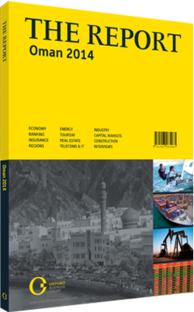OBG talks to Wayne Pearce, CEO, Oman Air

Interview: Wayne Pearce
With several major port projects under way and the proposed GCC rail network in the planning phase, how will this impact on air freight?
WAYNE PEARCE: Oman’s transport infrastructure is currently undergoing rapid growth, not only with the major ports projects and proposed GCC rail network under way, but also with new airports and the expansion of existing ones. We anticipate a parallel growth in air freight and, with Oman’s ideal location on the southern tip of the Arabian Peninsula, significant growth in integrated sea, air and road freight solutions. Oman Air’s freight business has expanded considerably since our cargo division was established in 2009, and in 2012 the segment grew by 29%, against the regional sector’s growth of 14.7% and a global decline of 1.5%, respectively.
We have achieved this by introducing a number of new freight services including: a pan-GCC custom-bonded truck service, in partnership with Able Logistics, which connects Salalah and Muscat with other countries in the Gulf region; a joint venture with DHL that has seen regular air freight services between Muscat and Dubai; and an agreement with the Port of Salalah that is strengthening links between the sultanate’s sea and air freight transport sectors, as well as additional opportunities to develop Oman’s European freight transport market. We have also entered into a joint venture with the Oman Airports Management Company, investing in modern cargo handling facilities at both Muscat and Salalah airports, as well as at new airports which are due to start operations over the next few years. It is clear, then, that cargo handling will play an increasingly important part in the sultanate’s economic growth and we have ensured that Oman Air will be at the forefront of this vital sector.
To what extent can code-share agreements enhance revenue streams, and what are the likely challenges to their implementation?
PEARCE: Code-shares are a good way of assessing the potential of new markets, extending an airline’s reach, increasing frequencies and broadening the range of choices offered to customers. Moreover, given that they are operated in partnership with other airlines, they are a very cost-effective option.
Notwithstanding, code-share agreements also have their challenges. Airlines in partnership need to share the same service philosophy and standards and each member of the partnership has to be confident of the other’s ability to deliver consistently in terms of quality, punctuality and customer service.
Furthermore, just as code-shares offer access to emerging markets, partners are able to access the Omani market, which increases the incentive for airlines to ensure that they are really offering the very best in 21st-century air travel.
Challenges aside, however, code-share agreements offer considerable potential for airlines, and it is important to continue to explore opportunities to add greater value and choice for airline customers.
With fuel and salary costs continuing to rise, is it ultimately the passenger that is picking up the bill with increased airfares?
PEARCE: All international airlines are faced with similar pressures on costs and, while rising fuel and salary costs seem to be a constant feature of the aviation business, so is the downward pressure on ticket costs caused by competition. It makes having a robust and resilient expansion strategy, and the ability to plan over the long term, absolutely vital. To this end, airlines can control the impact of increasing costs and ensure that passengers receive the best possible deals.
This approach applies to all the markets an airline operates within and, although Asian economies appear to be stronger than Western markets at the moment, airlines need to be able to plan for a time when that may not be the case. In order to do this, while continuing to concentrate on markets that are flourishing at a particular time, it is important to maintain services and standards across all worldwide destinations.
You have reached the limit of premium articles you can view for free.
Choose from the options below to purchase print or digital editions of our Reports. You can also purchase a website subscription giving you unlimited access to all of our Reports online for 12 months.
If you have already purchased this Report or have a website subscription, please login to continue.

